What is the meaning of this sign?:
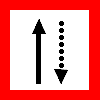
- No meeting or overtaking.
- Keep to the right of the channel.
- Keep to the left of the channel.
- Beware of oncoming high speed traffic.
What is the meaning of this sign?:
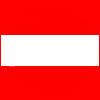
- No entry.
- Low bridge.
- No power vessels.
- Speed limits apply.
The meaning of this signal when displayed on a vessel is:

- The vessel has priority.
- The vessel is under 20m long and has 15 passengers.
- The vessel requires medical assistance.
- The vessel is carrying a dangerous cargo.
What is the meaning of this sign?:
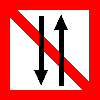
- No entry.
- No meeting or overtaking.
- No motorised vessels.
- All vessels to proceed at slow speed.
When overtaking on a river, you would normally do so:
- On the starboard side of the other vessel.
- On the port side of the other vessel.
- On the side the other vessel is displaying a blue board.
- On the side that your vessel is displaying a blue board.
What is the meaning of this sign?:
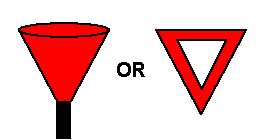
- There is a hazard on the right side of the channel.
- There is a hazard on the left side of the channel.
- Warning - Ferry ahead.
- Stop at the junction ahead.
What is the meaning of this sign?:
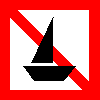
- No sailing vessels.
- No "small craft".
- Wildlife reserve.
- Area reserved for sailing vessels only.
What is the meaning of this sign?:
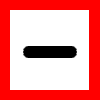
- Be prepared to stop as regulations require.
- No entry.
- Strong current.
- Channel in the center.
This sound signal means:

- My engines are going astern.
- There is a danger of collision.
- I am going to turn 180 degrees to port.
- I am turning to starboard.
What is the meaning of this sign?:

- Diving operations.
- No entry.
- End of a restriction.
- Restricted area.
What is the meaning of this signal when displayed on a vessel?:

- Vessel engaged in fishing.
- There is a pilot aboard.
- The vessel is not under command.
- The vessel is engaged in diving operations.
Which of the following statements are true?:
- Small craft are not permitted on Class 1 waterways.
- Small craft are not permitted on Class 2 waterways.
- Small craft must carry a pilot on Class 1 waterways.
- Small craft must give way to "normal vessels.
What is the meaning of this signal when displayed on a vessel?:
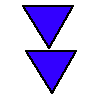
- The vessel is carrying a dangerous cargo.
- The vessel is towing.
- The vessel is not under command.
- The vessel is fishing.
What is the meaning of the following signal when displayed on a vessel?:
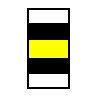
- The vessel is not under command.
- The vessel is towing.
- The vessel is constrained by draught.
- The vessel is a ferry.